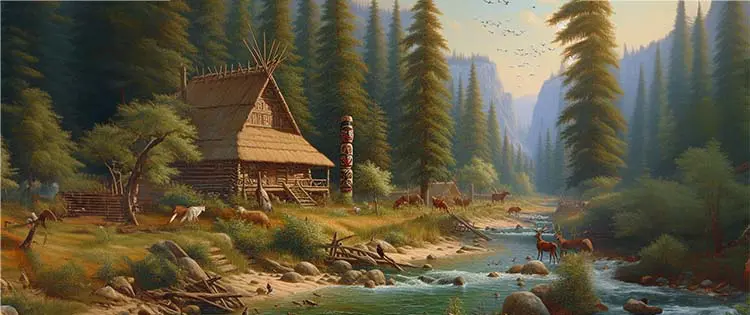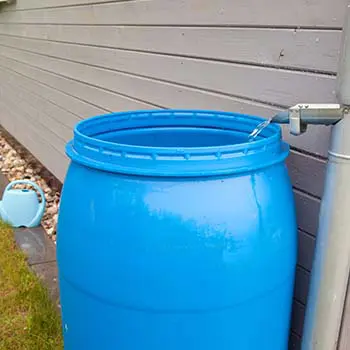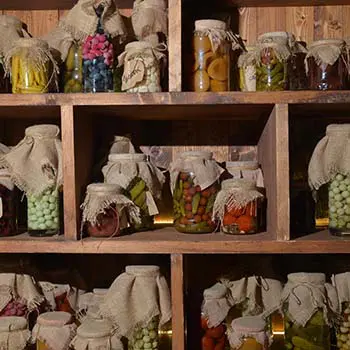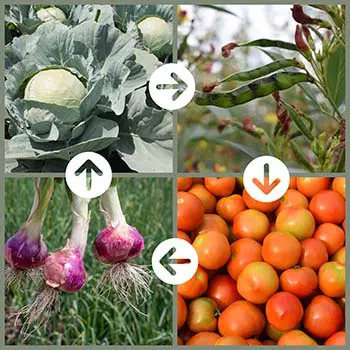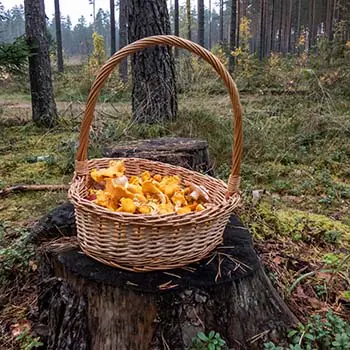Native Americans mastered the art of existing in the wild long before modern conveniences, but how was that even possible?
In the past, Native Americans have been the rulers of the land since ancient times. They had unique skills to live off the land and always kept up with the best ways to make their lives sustainable.
But if I picture myself without modern technology today, especially while living off the land, I’m pretty sure I’d be in big trouble way too soon. So, how did local Americans manage their farmstead lives?
Just by using the homesteading skills they were passed down to them from their ancestors. And today, in this post, I’ll share all of these tidbits to make your farmsteading journey more convenient.
So, let’s move ahead and design a sustainable and practical homestead inspired by our ancestors.
Shelter-Building Techniques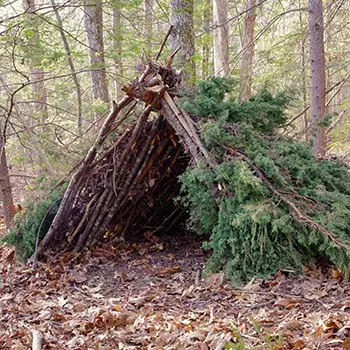
In ancient times, building a fancy shelter was impossible due to the lack of modern resources. Consequently, people turned to the materials at hand, constructing sturdy homes with what nature readily provided.
Meanwhile, native inhabitants of America were pros at crafting homes with natural materials.
One of the most common techniques that prevailed in Native American homesteading was building roofs using wattle and daub. This method comprised weaving branches or twigs into a framework, which was then coated with a mixture of mud and clay. As a result, the byproduct was a sturdy and effective shelter.
The wattle and daub construction technique can still be applied in today’s modern world. If you, like me, live far away from the city, this method can save you money on transporting construction materials.
Moreover, the combination of wattle and daub creates a structure with excellent thermal properties. This genius construction helps maintain a comfortable temperature inside without the need for excessive heating or cooling.
Fire-Craft and Fire-Making Methods
In the absence of modern heating tools, Native Americans relied on indigenous methods to make fire. One of their commonly utilized techniques, which is still in use today, is the friction approach.
No, I am not advising you to rub rocks together to start a fire. Instead, employ similar methods, such as the bow-drill technique, using a wooden bow, spindle, and fire board. While it requires precision, mastering this ancient method can be highly effective.
The fire-pit design is another fire-crafting method religiously practiced by Native American households. To employ this approach, dig a shallow pit and surround it with rocks. Next, fill this pit using dry leaves and spark the fire using the friction approach.
Make sure not to use wet leaves or logs, as they can hinder the combustion process and make the fire-starting process challenging.
Water Conservation
Native American tribes historically employed sustainable water management practices, adapting to their diverse environments. Techniques included rainwater harvesting through natural depressions or dwelling designs, efficient use of greywater from washing activities, and xeriscaping with drought-resistant plants in arid regions. Traditional agricultural methods involved mulching to retain soil moisture and employing water-efficient strategies, though specific drip irrigation systems weren’t prevalent.
Various tribes also had unique water conservation methods, such as checking dams or terracing, influencing water flow and aquifer recharge. Some tribes used natural materials like sand or charcoal for water filtration, and certain plants were recognized for their purifying properties. Most importantly, Native American cultures held water in high regard, emphasizing its sacred nature through rituals.
Time-Tested Food Preservation
Native American farmsteading life didn’t have the concept of refrigerators or ovens. However, even without these modern conveniences, they could enjoy nutritious food throughout the year.
Here are some of our ancestors’ most convenient time-tested food preservation methods:
- Drying: Native Americans frequently air-dried or sun-dried foods, removing moisture and preventing bacterial growth. You can replicate the same procedure by using natural sunlight. Dry meat, tomatoes, vegetables, or even fruits to have them available all the time on your homestead.
- Fermentation: In ancient times, fermentation was a prevalent method for preserving vegetables. To start, submerge your vegetables in a water and salt solution. Seal it in the jar and place it in a cool and dry place.
- Smoking: Smoking is another helpful technique commonly used for preserving meat. For this, you can use a smoker or construct a small smokehouse on your homestead. All you need for smoking is a wooden frame, hardwood chips, and some racks for hanging meat.
Additionally, to make the most out of these preserved edibles, residents of Native America utilized their unique culinary craftsmanship. To have delicious and nutritious food just like our pioneers, you can also follow in their footsteps by trying:
- Stone Boiling: To utilize this method, gather heat-resistant containers. Heat stones, then carefully place them in the liquid. Repeat until the desired temperature is obtained.
- Earthen Ovens: I’ve always been a fan of earthen ovens, and on my farmstead, I had the privilege to make this dream come true. You can also build one using mud or bricks on your farmstead. Bake bread, pizzas, or even your favorite casseroles in this natural oven.
Native American Gardening Insights
Tending the Earth was not only a favorite pastime hobby of Native Americans but also their way of life. As a result, they paid particular attention to their lands and always came up with convincing practices.
A few of the most sustainable and holistic approaches to gardening approved by our native american pioneers included:
- Companion Planting: This technique involves planting different crops together to enhance growth and prevent pests. A good example is planting corn, squash, and beans together. It’s called the three-sister model. The corn helps the beans climb high and also scares away bugs that bother the squash.
- Crop Rotation: If you don’t want to deplete soil on your farm, crop rotation is the solution. For example, in the first year, try planting nitrogen-fixing legumes like peas. In the following year, you can then switch to nutrient-hungry crops like corn. Following this cycle will not only prevent nutrient depletion but will also improve the overall soil health.
- Save the Best Seeds: Native Americans saved the best seeds to ensure the continuity of desirable crop traits. Before you employ this method, dry out the seeds completely. Also, store them in a secure place to avoid bugs invasion.
Foraging
Native Americans had invaluable knowledge of the surrounding vegetation. This allowed them to readily identify edible greens and get rid of the inedible harvests. You can also develop this skill by familiarizing yourself with local plant life.
For instance, one way to identify toxic mushrooms is to look for distinctive features like bright colors, unusual shapes, or rotten odors. However, while caring for the vegetation, it is important not to overlook sustainability.
What I find most ingenious about Native American homesteading is the principle of not wasting anything from the harvest. Take acorns, for instance. In my foraging adventures, I learned that acorns are not only a food source but also have various other uses. You can ground them into flour to make delicious and nutritious breads and finally use their shells to weave baskets.
Navigation Using Natural Cues
Have you ever thought about what would happen if you ever got lost in the wild?
Native Americans didn’t have proper GPS systems, so they usually relied on natural cues while traveling. For instance, while navigating in the dark, major constellations and their directions can help you identify various paths.
Suppose you want to move towards the North; you can seek help from the North Star constellation. Moreover, if you are in the Northern Hemisphere and unsure of the directions, use the Orion constellation to navigate towards the south.
However, if you are going somewhere during the daytime, then obviously, the stars aren’t going to guide you. In that case, plants or trees can serve as accurate indicators. For example, moss usually grows on the shaded sides of a tree or north-facing surfaces. So, the more moss there is, the more that direction points towards the North.
The wealth of knowledge left by Native Americans serves as a guiding path for us to navigate the realm of homesteading while adhering to sustainable practices.
Their approaches prove that living off the land isn’t challenging even when you don’t have modern luxuries. From building shelters using natural materials to foraging for edibles, their survival skills are indeed invaluable.
You may also like:
Native American Recipes Every Homesteader Must Know
How To Render Lard And How To Preserve Meat In It Like The Pioneers (Video)
50 Uses For Aluminum Foil In Your Homestead

